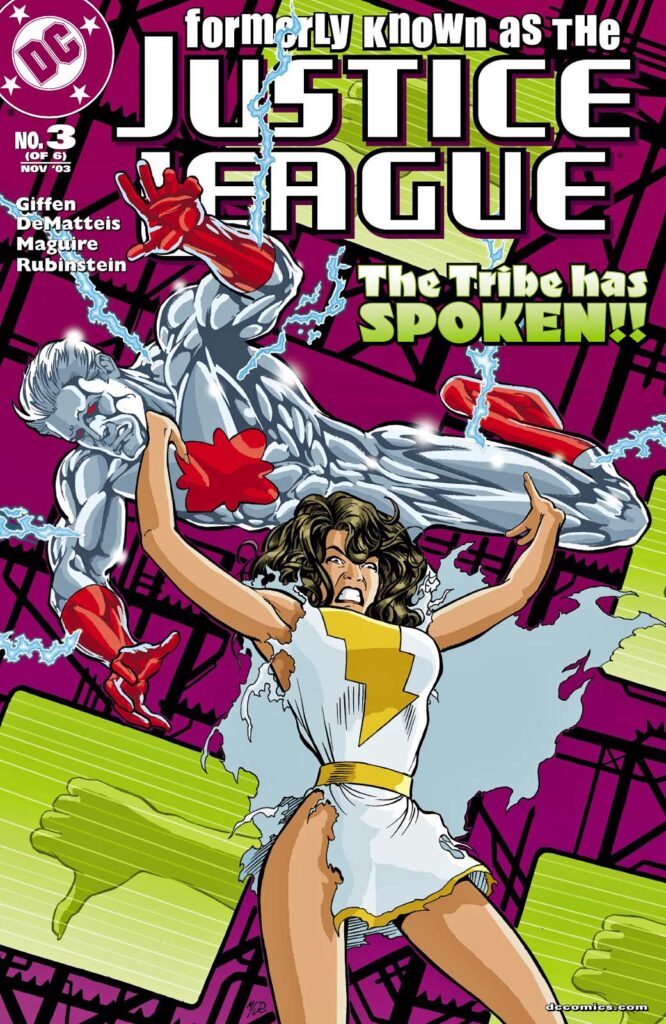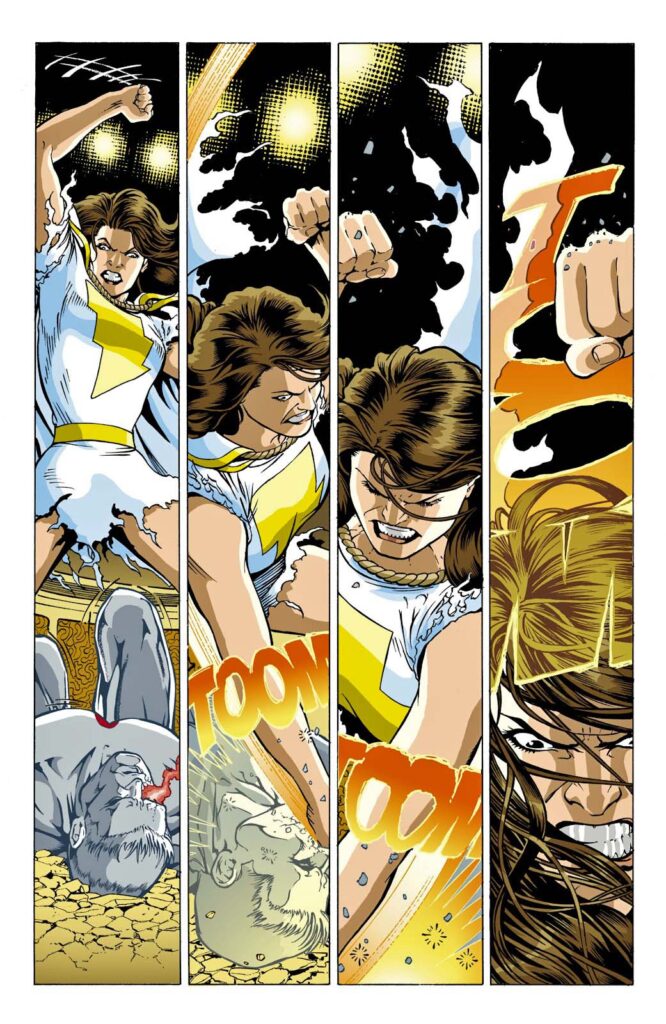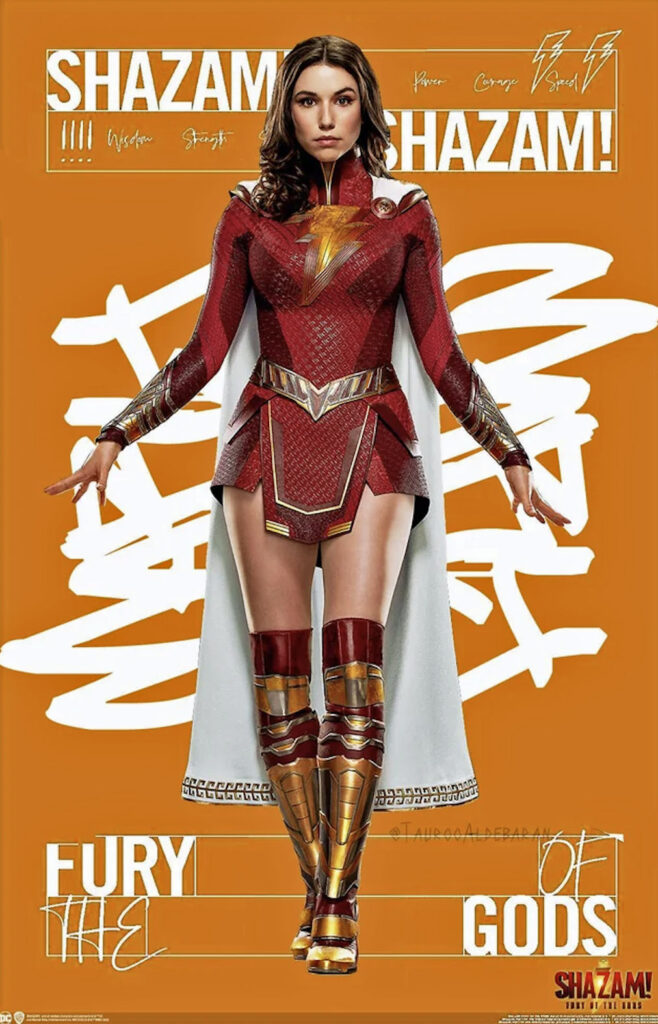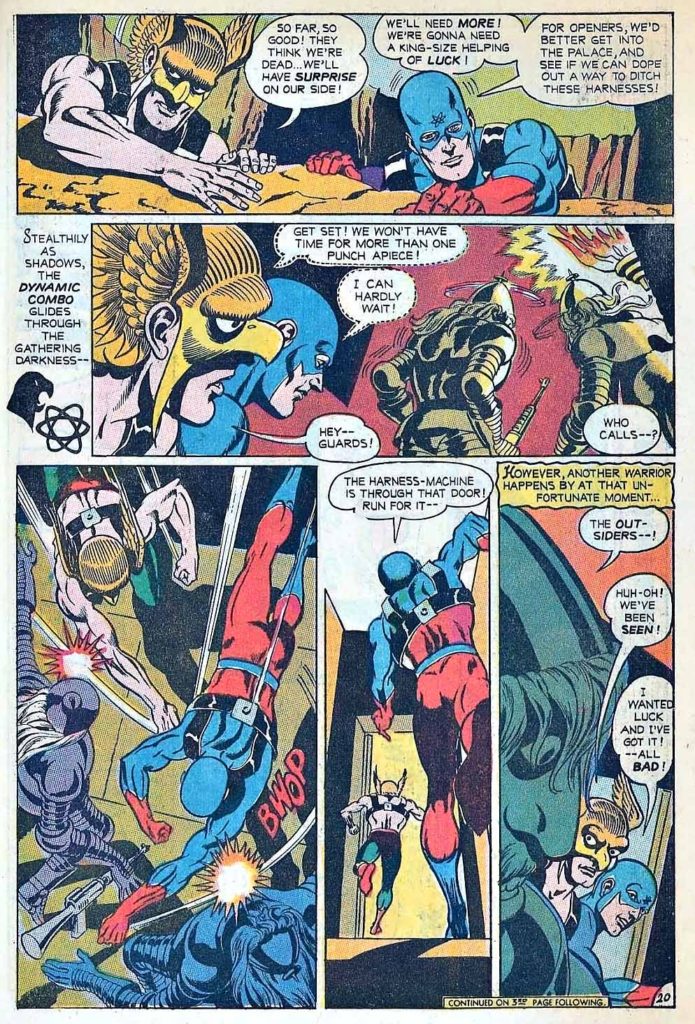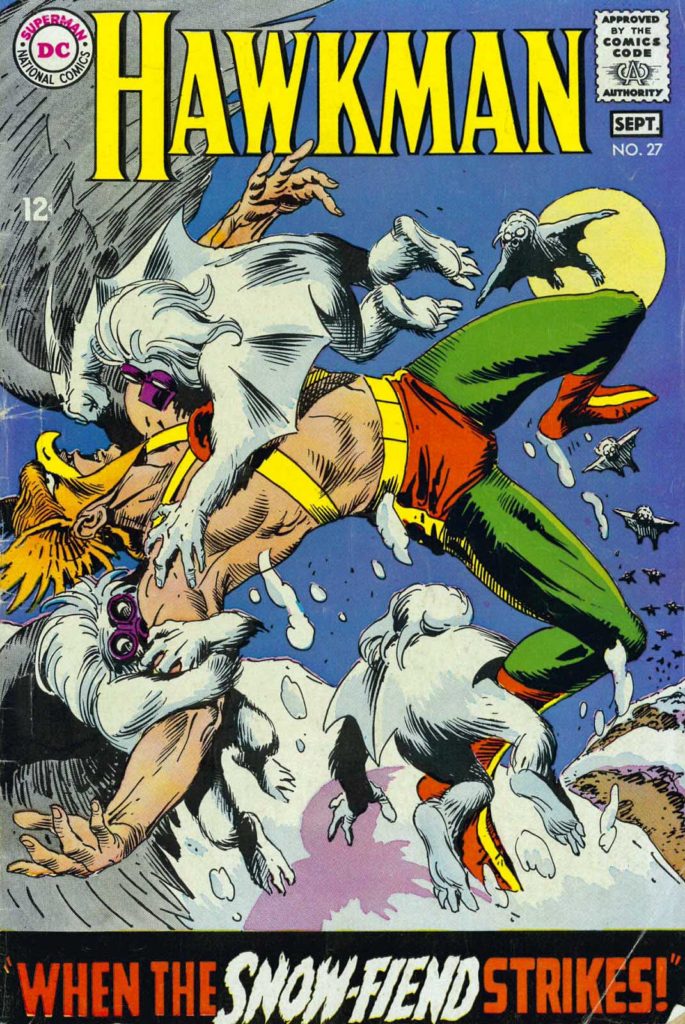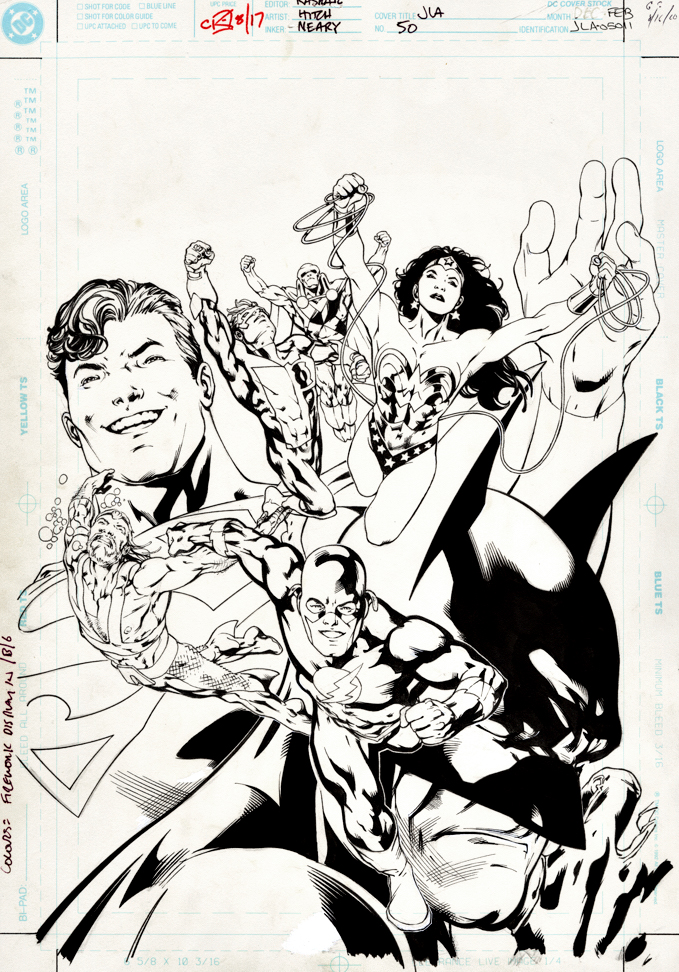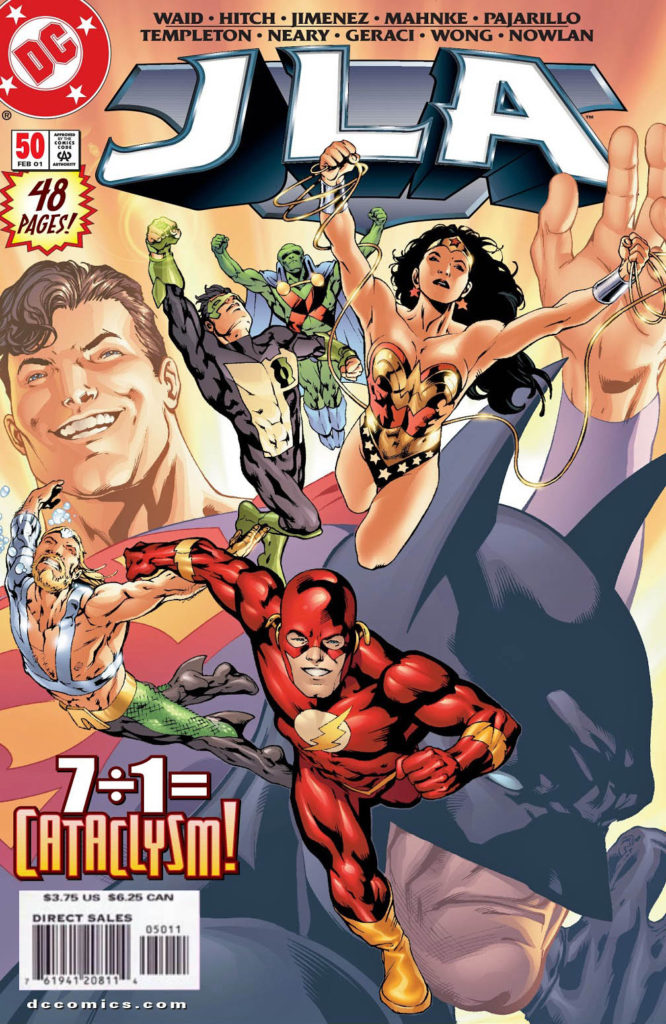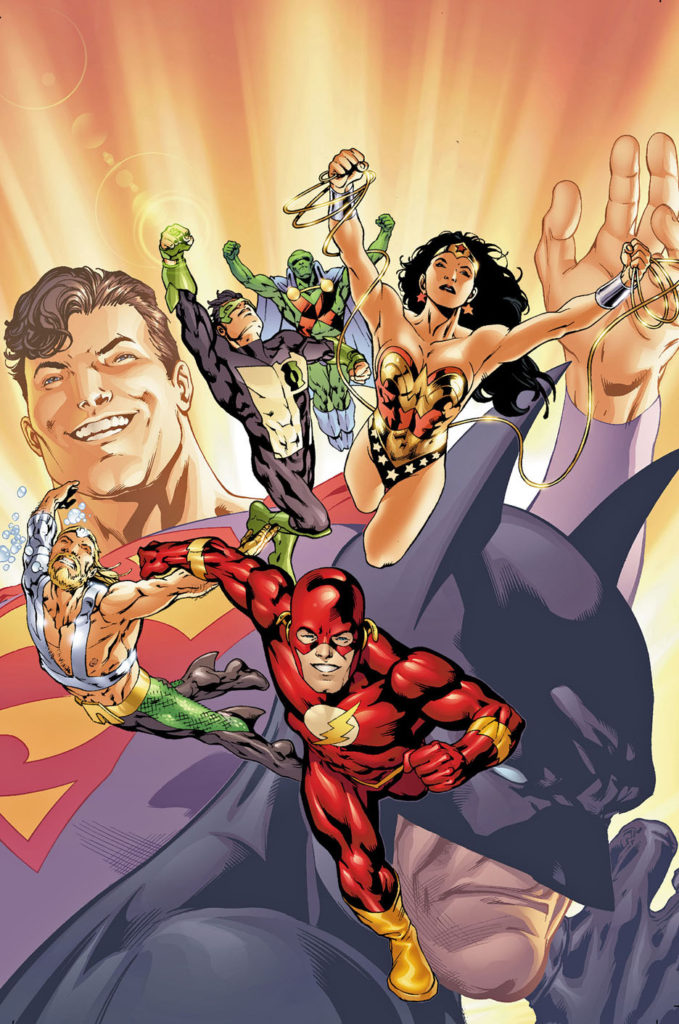Kevin Maguire — Mary Marvel Gets VERY Angry
Formerly Known As The Justice League #3, November 2003
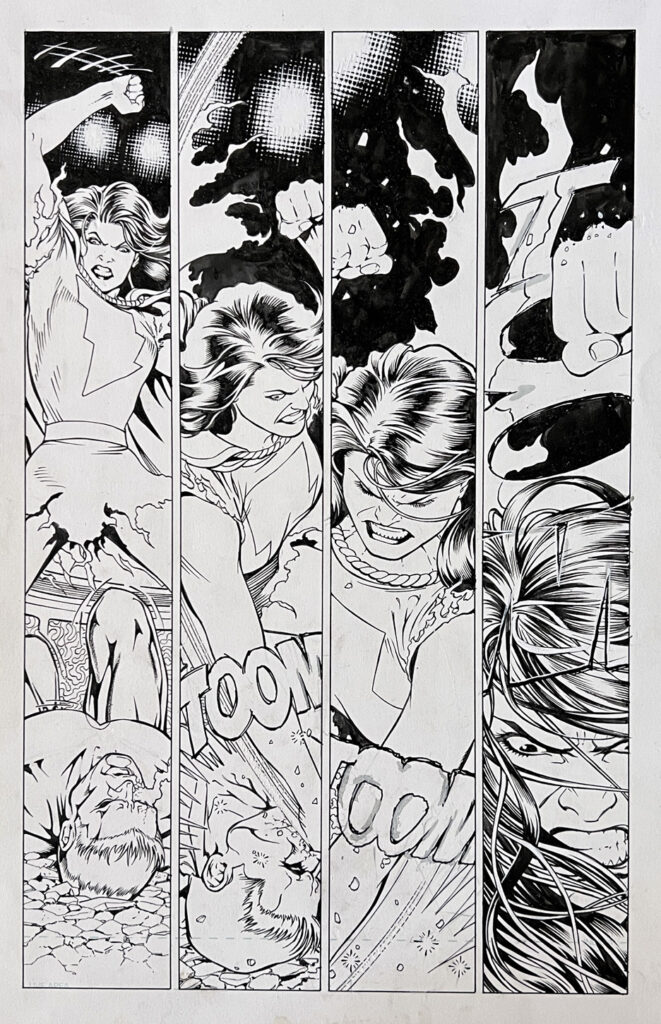
Mary Marvel beats the nuclear daylights out of Captain Atom in this innovative, and terrific action page, by Kevin Maguire.
Everything about this page works for me: Storytelling, composition, movement, and the absolute rage on Mary’s face.
She’s pissed.
Of course, since it’s comics, and we know Mary is an otherwise lovely person, she’s clearly under some sort of mind control. Everything will eventually be fine, yes? Well, in this reunion of the classic 80s JLA creative team (Writers J.M. Dematteis and Keith Giffen, Maguire, and inker Joe Rubenstein) who can say?
Or maybe she’s just upset that the collection of this Eisner-winning series is unavailable. That annoys me, too.
